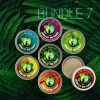Sacred Indigenous Tobacco Snuff – Rapéh
Haux and Namaste Great Txais!
Check out our Selection of Rapéh
Yopo, Anadenanthera pilgrim and pilgrim Piptadenia are different names for the same plant, which has a rich ethnobotanical history. Not to be confused with the white angico (Anadenanthera colubrina). Its use is well documented and expands to at least 55 indigenous tribes.
The powder made from the seeds is called cohoba, and it’s used in rituals in Brazil, Chile, Colombia, Peru, Haiti, Dominican Republic and Puerto Rico. Many tools have been used to apply the medicine; the long tube, used for blowing cohoba to the nose of another person, being the most familiar object.
Effects
This snuff is to be taken seriously. It can effects that are similar to what one might experience in ceremony. Take it at home, by the fire in ceremonial ways. Just like any kind of Rape’ Snuff, it should always be used in sacred ways.
Before applying the rapé snuff to someone if you have not cleared your mind, it is recommended to first apply it to yourself so that you can clear your thoughts and increase your awareness.
So from the moment when you can see your breath and take in everything around you, being present there with the universe, that is the right time to blow and you can feel the medicine more properly!
For more information watch the videos below and follow us in our RAW Newsletter – Rainforest Awareness Worldwide
[/vc_column_text][vc_column_text]Shaman Snuff – Third Eye Snuff – Wachuma Snuff – Sananga Eye Drops – Kambo Frog – Tsunu Rapé Snuff
[/vc_column_text][/vc_column][/vc_row]What is the base of Yopo made from?
What are the ingredients used to make the base of Yopo?
The base of Yopo is prepared with dried seeds, ashes, and other ingredients that can vary to give it a pleasant smell.
How is the base of Yopo prepared?
The dried seeds are lightly toasted and then ground into a fine powder. This powder is mixed with ashes and other ingredients.
What is the base of Yopo made from?
The base of Yopo is made from dried seeds of the Anadenanthera Peregrina tree.






 Join the Tribe
Join the Tribe